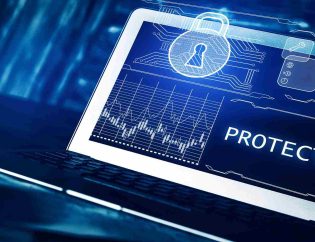
Introduction
In today’s rapidly evolving digital landscape, businesses face an increasing need to safeguard their devices and data. Endpoint Security Management plays a crucial role in protecting endpoint devices like laptops, smartphones and IoT systems, which are often targeted by cyber threats. By leveraging solutions provided by reliable Endpoint Security Company, organizations can effectively secure sensitive data, fortify their networks and minimize risks. In this article, we’ll delve deeper into the workings and importance of Endpoint Security and how it protects businesses from threats.
Table of Contents
What is Endpoint Security Management?
Endpoint Security Management refers to a comprehensive approach to securing endpoint devices, such as laptops, smartphones, desktops and servers, that connect to an organization’s network. These devices, often the first point of contact for cyber threats, need constant monitoring and protection.
By implementing endpoint security & management, businesses can:
This robust strategy is vital for maintaining a secure endpoint network and protecting corporate assets.
Why is Endpoint Security Management Crucial?
The increasing reliance on digital tools has made endpoint devices prime targets for cyberattacks. Moreover, the shift to remote work has expanded the attack surface, making endpoint protection more critical than ever.
Here’s why it’s indispensable:
Prevents Data Breaches:
With tools like encryption and access control, endpoint security management systems prevent unauthorized access to sensitive data.
Ensures Compliance:
Many industries require strict data protection protocols. Endpoint management and security systems help organizations meet these regulatory requirements.
Enhances Business Continuity:
Cyberattacks can disrupt operations, but endpoint protection ensures minimal downtime.
How Endpoint Security Management Works
Endpoint Security Management employs a multi-layered approach to detect, mitigate and prevent cyber threats. Here’s how it works step-by-step:
Continuous Monitoring
Endpoint devices are monitored 24/7 for suspicious activities, ensuring no potential threat goes unnoticed.
Threat Detection and Response
Advanced tools analyze endpoint network traffic to identify potential risks. Once detected, automated systems quickly neutralize these threats.
Data Encryption
All data stored on or transmitted through endpoint devices is encrypted, rendering it useless to unauthorized users.
Patch Management
Regular updates ensure all software and applications are secure, reducing vulnerabilities.
Table: Components of Endpoint Security Management
| Component | Function |
|---|---|
| Real-Time Monitoring | Detects unusual behavior on endpoints |
| Threat Intelligence | Provides updates on emerging threats |
| Data Encryption | Secures sensitive data on endpoint devices |
| Patch Management | Ensures systems remain up to date and secure |
| Multi-Factor Authentication | Adds layers of security to user access |
Key Features of Endpoint Security Management Systems
An effective endpoint security management system should offer the following key features:
Centralized Control
A unified dashboard allows IT administrators to manage and monitor all endpoint devices seamlessly.
Threat Intelligence Integration
By integrating real-time threat intelligence, businesses stay ahead of emerging cyber risks.
Data Loss Prevention (DLP)
This feature prevents sensitive data from being shared, copied, or accessed inappropriately.
Multi-Factor Authentication
MFA ensures only authorized personnel access critical systems, reducing unauthorized breaches.
Benefits of Mobile Endpoint Security Management
As mobile devices become more integral to business operations, ensuring their security is critical. Mobile endpoint security management provides tailored solutions to protect remote devices, especially in hybrid work environments.
Key Benefits Include:
Protection for Remote Workforces
Ensures employees can work securely, even when accessing corporate systems from outside the office.
Enhanced Productivity
Prevents disruptions caused by malware or unauthorized access attempts, enabling seamless operations.
Regulatory Compliance
Many industries require strict protection for mobile endpoints to meet data privacy standards.
By securing mobile devices, businesses can operate more confidently in the digital era.
Essential Practices for Endpoint Security
- Regularly update all endpoint devices.
- Encrypt data on every endpoint to secure sensitive information.
- Use AI-powered tools to detect and respond to threats in real time.
- Conduct regular employee training on cybersecurity best practices.
Tips to Strengthen Endpoint Network Security
Implementing effective endpoint management and security strategies ensures not just device safety but also the protection of your entire network.
Here are some tips to strengthen your endpoint network security:
Use Endpoint Firewalls
Firewalls act as barriers, preventing unauthorized traffic from reaching endpoints.
Enable Multi-Factor Authentication
MFA adds another layer of security, making it harder for attackers to access systems.
Employee Awareness Programs
Teach employees how to identify phishing attempts and other cyber threats.
Deploy AI-Driven Monitoring Tools
AI tools can predict and neutralize threats faster than traditional methods.
Customer Testimonial:
“Since implementing endpoint security management systems, we’ve noticed a 90% drop in unauthorized access attempts. The centralized monitoring tools are incredibly efficient and easy to use.”
– Linda J., IT Director
Common Threats Mitigated by Endpoint Security
Endpoint security management is your best defense in today’s cybersecurity landscape. Protect your devices, secure your network. #endpointsecurity
— Hyper Secure (@HyperSecure) December 9, 2024
Conclusion
Endpoint Security Management is not just a protective measure; it’s a necessity for businesses navigating the digital landscape. By safeguarding endpoint devices, organizations can mitigate risks, ensure compliance and enhance productivity. At Hyper Secure, we provide tailored solutions for endpoint security & management, helping businesses build a robust defense against cyber threats.
FAQs
1. What is Endpoint Security Management?
It’s a system of tools and protocols designed to secure endpoint devices from cyber threats, ensuring safe and compliant operations.
2. Why is Endpoint Security Management Important?
It protects against data breaches, ensures compliance and reduces operational risks by securing endpoint devices.
3. How Does Endpoint Security Protect Remote Devices?
By encrypting data, monitoring endpoint activities and providing real-time threat detection for devices outside the corporate network.
4. What Features Are Crucial in Endpoint Security Systems?
Key features include centralized control, multi-factor authentication and data loss prevention.
5. Who Benefits Most from Endpoint Security?
Industries such as healthcare, finance and retail benefit significantly from strong endpoint security management.








